English | Dutch |
|
| Grenada has it all | |
Tobego (Trinidad & Tobego), April 19th 2015
|
|
| |
|
After Barbados, St Lucia and St Vincent and the Grenadines, Grenada is the fourth country we visit in this string of lesser Antillean islands in the southern part of the Caribbean Sea. It is known as the spice isle, due to its production of nutmeg along with other spices like cinnamon, cloves, ginger, turmeric and mace. But Grenada is also an upmarket holiday island, serving people with deeper pockets who like to travel to one the lesser visited islands in the Caribbean. And as most islands in this area, Grenada is also a popular destination among yachties, people who do island hopping on their own, or sometimes rented yacht. Grenada consist of three inhabited islands; Grenada, which is the main island of the island group, and the much smaller islands Carriacou and Petit Martinique. The two latter islands are much less tourist oriented and make a great alternative for the busy main island. We started our visit to Grenada on Carriacou. We arrived by a small ferry boat from nearby Union Island, which is part of St Vincent and the Grenadines. Hillsborough is the main town of Carriacou and has all the facilities that you need, a couple of banks (with ATMs), some supermarkets and a selection of hotels, bars and restaurants. We spent the Easter days on Carriacou and during public holidays (even on Sunday) everything closes on this tiny island. Even the restaurants. So be prepared and arrange some food for these days beforehand if you don’t like to have an empty stomach. |
|
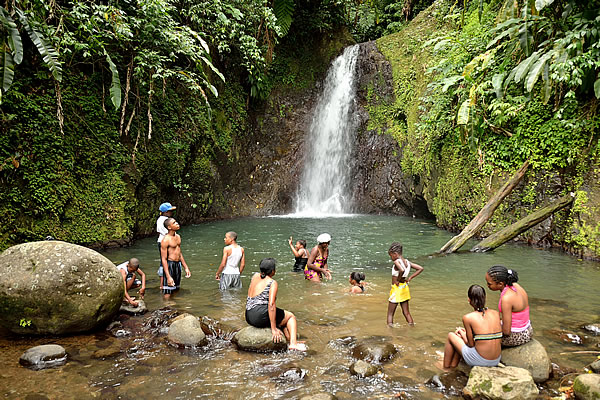 |
|
Local people cooling off in the Seven Sisters Waterfall |
|
There isn’t really a lot to do on Carriacou, except for beach life and hiking. But it is a great destination to experience Caribbean life as it was several decades ago before the huge number of tourists arrived in the area. A couple of days is enough to explore the island. Carriacou is connected with Grenada by fast ferry, operated by Osprey Lines. There used to be two ferries a day, but when we were there the service was reduced to one per day; a morning ferry from Grenada to Carriacou, and an afternoon trip from Carriacou to Grenada. The ferry has an open deck, which makes the two hour ride and great way to see something of the inhabited islands on the way from Carriacou to Grenada. The epicentre of Grenada’s tourist industry is in the south-west corner of Grenada Island. This is also where the international airport is and Grenada’s capital city called St George’s. This part of the island also holds the most famous beach of the island, called Grand Anse Beach, and a few other attractive beaches. This is the only area on the island where you see loads of tourists, who all stay around the beaches and nearby resorts. If you take a minibus to one of the other parts of the island, with exception of the also popular Grand Etang National Park in the heart of the island, you are probably the only foreigner. And travelling around the island by public transport is not also easy, but also great fun. Yes, the minibuses are too small for the number of people they put in. And yes, they often also play very loud music and drive like crazy. But it is still a great way to experience some of the local way of life. Minibuses reach most parts of the island and are cheap and frequent. In our opinion it is really not necessary to hire a car to visit the more ‘remote’ tourist attractions. | |
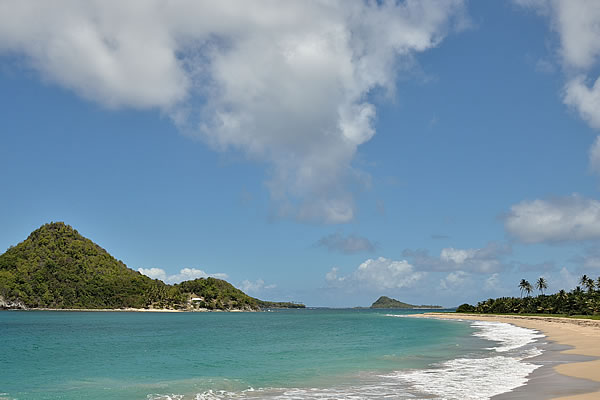 |
|
The remote beach of Levera in northern Grenada |
|
St George’s is an attractive little town with some interesting colonial buildings. It is the commercial heart of the island with a cruise terminal and a well organised bus station from where minibuses leave to all corners of the island. A visit to the Grand Etang National Park is recommended. The park has some nice walking trails and waterfalls. Another great area to visit is Levera National Park in the very north of the island. We took a minibus to the tiny town of Sauteurs and walked along the coast, through Levera National Park, to Bathway Beach. The national park is home to Levera Beach, a perfect powder white beach with a great view on an offshore conical island. This part of the island receives only a fraction of the visitors to Grenada and is a great way to escape the crowds. At the end of the 1970s, a revolutionary government gained power in Grenada which soon after intensified ties with (more) communist regimes in Nicaragua, Cuba and the Soviet Union. As a result, Grenada became a pawn of the Cold War, eventually resulting in a 1983 US invasion on the Island. The US always said that the interference was a ‘rescue’ operation to evacuate American medical students from the island, but most people are convinced that it was a way to get rid of the socialist government on the island. Whatever the reason was, the result was that it also resulted in some interesting cold war relics. On the abandoned Pearls Airport on the eastern coast of the island, you can admire two old rusting Russian planes, one small Aeroflot plane and an Antonov 26 from Cubana Airlines. The partly overgrown runway is nowadays occasionally used by the local male youth to do car races. Grenada is definitely an interesting place to visit. It is much more beautiful than for example Barbados, but also more developed than St Lucia and St Vincent and the Grenadines. If you want to visit a safe island in the area with beautiful beaches, a stunning hinterland and good facilities, Grenada is probably a good choice. |
|
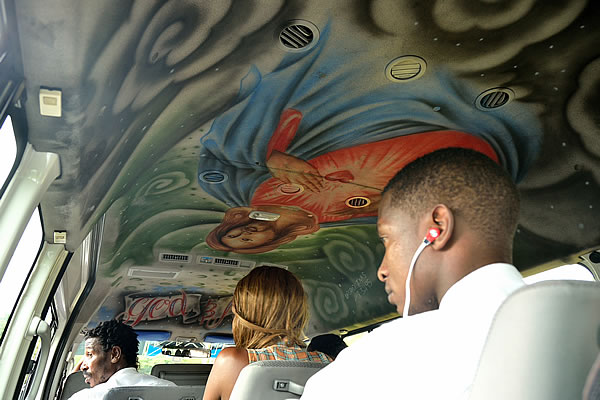 |
|
Inside interior of a minibus on Grenada |
|
 |
|
Waiting for the ferry from carriacou to Grenada |
|
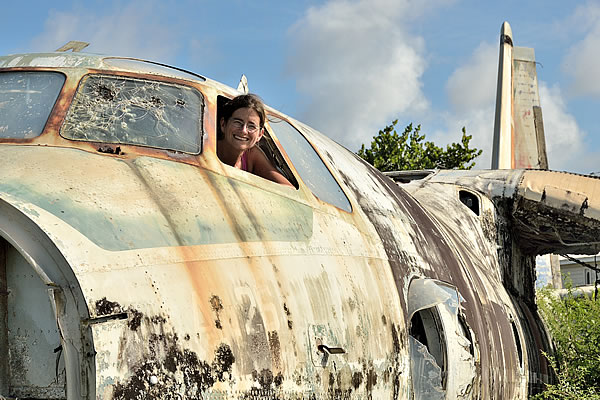 |
|
Ivonne in an old Cubana airplane on Grenada's abandoned Pearls Airport |
|
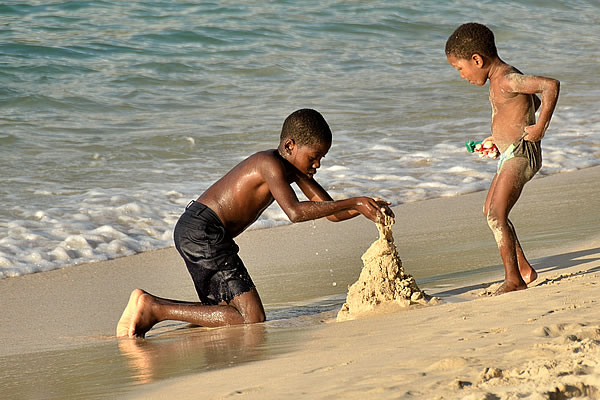 |
|
Local kids having fun on Grand Anse Beach |
|
 |
|
Our self made tuna-corn-beans salad during the Easter days on Carriacou |
|